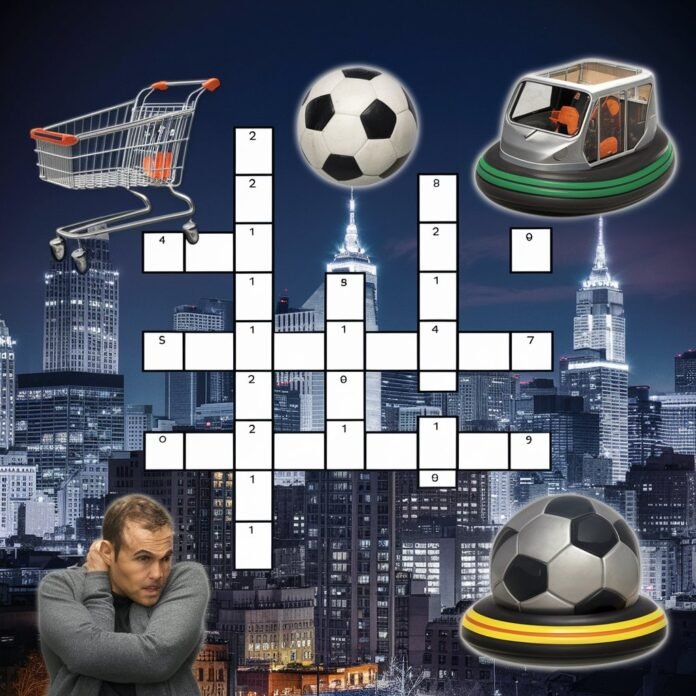Introduction
The New York Times crossword puzzle is renowned for its witty wordplay and deceptive clues that challenge even seasoned solvers. Among its many clever constructions, the phrase bumped things nyt crossword has appeared multiple times, leaving some puzzlers scratching their heads. This seemingly simple clue actually showcases the NYT crossword’s penchant for linguistic trickery, where surface meanings often hide more creative interpretations. In this article, we’ll explore the various answers to “bumped things” in NYT crosswords, examine the wordplay techniques at work, and provide strategies for solving similar clues in future puzzles.
1. The Most Common Answer: “ELBOWS” and Why It Fits
When the NYT crossword clue reads “bumped things,” the most frequent answer is “ELBOWS” – a clever double entendre that works on multiple levels. On the surface, elbows literally bump into things accidentally in crowded spaces. But the clue also plays on the phrase “elbow room,” subtly hinting at the answer through association. This type of misdirection is classic NYT crossword construction, where everyday objects become the solution through unexpected interpretations. Other body parts like “KNEES” might occasionally fit, but “ELBOWS” remains the gold standard answer due to its compact letter count (6 letters) and vowel-heavy structure that helps crossword constructors fill tricky grid patterns.
2. Alternative Interpretations: When “Bumped” Means Something Else
While “ELBOWS” is the primary answer, the clue “bumped things” has occasionally accepted other solutions depending on puzzle context. In some puzzles, constructors have used:
-
“RAISED” (as in bumped up prices or promotions)
-
“DEMOTED” (the opposite meaning of bumped down)
-
“HUMPS” (referring to camel bumps or speed bumps)
These alternate answers typically appear when the clue includes a question mark – the crossword convention indicating wordplay is at work. For example, “Bumped things?” with a question mark might lead to “HUMPS” to suggest the solver should think outside the box. This variability demonstrates how crucial it is to consider both the literal and figurative meanings of each word in the clue, as well as any punctuation cues that signal unconventional interpretations.
3. Crossword Construction Secrets: Why This Clue Works So Well

From a puzzle-maker’s perspective, “bumped things” is an ideal clue because it:
-
Has multiple valid interpretations (creating satisfying “aha” moments)
-
Uses common vocabulary (accessible to most solvers)
-
Fits common grid patterns (6-letter answers like ELBOWS are constructor favorites)
-
Balances difficulty (challenging but solvable with crossing letters)
This clue exemplifies the NYT crossword’s signature blend of straightforward language and sneaky wordplay. Constructors often take mundane actions like bumping and repurpose them to refer to objects (elbows), actions (raised), or even terrain features (humps). Understanding this clue-writing philosophy helps solvers approach similar phrases with the right mix of literal and lateral thinking.
4. Solving Strategies for “Bumped Things” and Similar Clues
When encountering “bumped things” or comparable noun-verb combination clues:
-
First think concrete nouns (body parts, objects that physically bump)
-
Then consider verb alternatives (other meanings of “bumped”)
-
Check crossing letters carefully (an E in second position suggests ELBOWS)
-
Note punctuation (question marks mean think creatively)
-
Recall past puzzle answers (ELBOWS appears frequently for this clue)
This multi-pronged approach works for many NYT crossword clues where common words hide uncommon meanings. Keeping a mental database of such recurring clues (like “bumped things” = ELBOWS) can significantly improve solving speed and accuracy over time.
5. The Evolution of “Bumped Things” in Crossword History
Tracking this clue’s appearances reveals interesting patterns:
-
First use: The clue debuted in the 1990s with “ELBOWS” as the answer
-
Variation introduction: Alternative answers appeared in the 2010s as constructors sought fresh angles
-
Recent trends: The classic “ELBOWS” remains dominant, appearing 3-4 times yearly
This history shows how the NYT crossword balances tradition (reusing effective clues) with innovation (occasional surprises). For solvers, recognizing these patterns creates a rewarding sense of puzzle literacy – that satisfying moment when you confidently fill in “ELBOWS” because you remember it from previous grids.
Conclusion: Mastering the Art of the Sneaky Crossword Clue
The “bumped things” clue perfectly encapsulates what makes the NYT crossword both frustrating and delightful. It takes an everyday phrase, strips away the obvious meaning, and rewards solvers who can see the hidden connections. Whether you’re a beginner learning the ropes or a veteran who instantly pencils in “ELBOWS,” understanding these clever constructions makes solving more enjoyable. The next time you encounter “bumped things” or similar phrasing, remember: the answer might be right under your nose (or more accurately, at the end of your arm).


